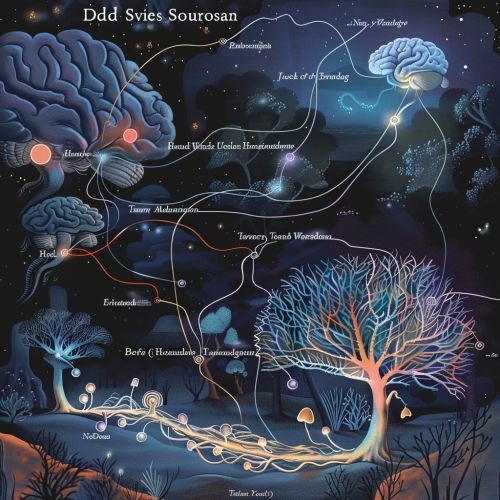Dual-store model
Dual-store Model
The dual-store model, also known as the multi-store model or Atkinson-Shiffrin model, is a theory of memory that proposes the existence of two distinct storage systems: short-term memory (STM) and long-term memory (LTM). This model was first introduced by Richard Atkinson and Richard Shiffrin in 1968 and has since become a foundational concept in cognitive psychology.


Historical Background
The dual-store model emerged during a period when cognitive psychology was gaining prominence as a field. Prior to this, behaviorist approaches dominated psychological research, focusing primarily on observable behaviors rather than internal mental processes. The introduction of the dual-store model marked a significant shift towards understanding the internal mechanisms of the mind, particularly how information is processed, stored, and retrieved.
Components of the Dual-store Model
Sensory Memory
Sensory memory is the initial stage of the dual-store model, where sensory information is briefly held before being transferred to short-term memory. Sensory memory is highly transient, lasting only a few milliseconds to a couple of seconds. It includes iconic memory for visual information and echoic memory for auditory information.
Short-term Memory (STM)
Short-term memory, also known as working memory, is the second stage of the dual-store model. STM has a limited capacity, typically holding about 7±2 items, and a limited duration, retaining information for approximately 20-30 seconds without rehearsal. STM is crucial for tasks that require immediate attention and processing, such as problem-solving and decision-making.
Long-term Memory (LTM)
Long-term memory is the final stage of the dual-store model, characterized by its virtually unlimited capacity and duration. Information in LTM can be stored for extended periods, ranging from hours to a lifetime. LTM is divided into several subtypes, including declarative memory (explicit memory) and non-declarative memory (implicit memory).
Processes Involved in the Dual-store Model
Encoding
Encoding is the process by which information is transformed into a format suitable for storage in memory. In the dual-store model, encoding involves the transfer of information from sensory memory to STM and from STM to LTM. Effective encoding often requires attention, elaboration, and the use of mnemonic devices.
Storage
Storage refers to the maintenance of information in memory over time. In STM, storage is temporary and relies on mechanisms such as rehearsal and chunking. In contrast, LTM storage is more stable and involves the consolidation of information, which can be influenced by factors such as sleep and emotional arousal.
Retrieval
Retrieval is the process of accessing stored information from memory. In the dual-store model, retrieval can occur from both STM and LTM. Successful retrieval often depends on the presence of retrieval cues and the context in which the information was encoded.
Empirical Evidence
Numerous studies have provided empirical support for the dual-store model. For example, the serial position effect, which includes the primacy and recency effects, demonstrates the distinct roles of STM and LTM in memory recall. The primacy effect refers to the enhanced recall of items presented at the beginning of a list, attributed to LTM, while the recency effect refers to the enhanced recall of items at the end of a list, attributed to STM.
Criticisms and Alternatives
Despite its influence, the dual-store model has faced criticism and has been supplemented by alternative theories. Critics argue that the model oversimplifies the complexity of memory processes and does not account for the interactions between STM and LTM. Alternative models, such as the working memory model proposed by Baddeley and Hitch, offer a more nuanced understanding of memory by incorporating components like the phonological loop, visuospatial sketchpad, and central executive.
Applications
The dual-store model has practical applications in various fields, including education, cognitive therapy, and artificial intelligence. In education, understanding the mechanisms of STM and LTM can inform teaching strategies that enhance learning and retention. In cognitive therapy, techniques that improve encoding and retrieval can be used to address memory-related issues. In artificial intelligence, the principles of the dual-store model can guide the development of memory systems in intelligent agents.
Conclusion
The dual-store model remains a foundational concept in cognitive psychology, providing valuable insights into the structure and function of human memory. While it has been refined and expanded by subsequent research, its core principles continue to inform our understanding of how information is processed, stored, and retrieved in the human mind.
